Affiliate links on Android Authority may earn us a commission. Learn more.
Android customization - improve battery life, identify battery killer apps
Published onMarch 26, 2015
Last week on our Android customization series, we took to the ultimate in cleaning up your Android device, walking through how to perform a factory reset on your device. While a reset is a pretty extreme measure for repairing some issues, we would like to look at a few battery drain repairs you might consider trying before you go all the way.
Today, we will dive into a few built in Android tools (non-ADB) to help identify if there is a rogue app that is eating up your battery. For the advanced user, dedicated to getting the absolute most battery life out of their device, today’s article may be a little basic for your needs.
Before we begin
We are not doing anything that requires any third-party apps today. However, we will be working from our typical stock vanilla Android 5+ Lollipop device. Your manufacturer or carrier skin may have eliminated, hidden or simply over-written these tools with their own offerings. Nonetheless, the theory of what we will discuss today may still work for you, even if the exact steps do not.
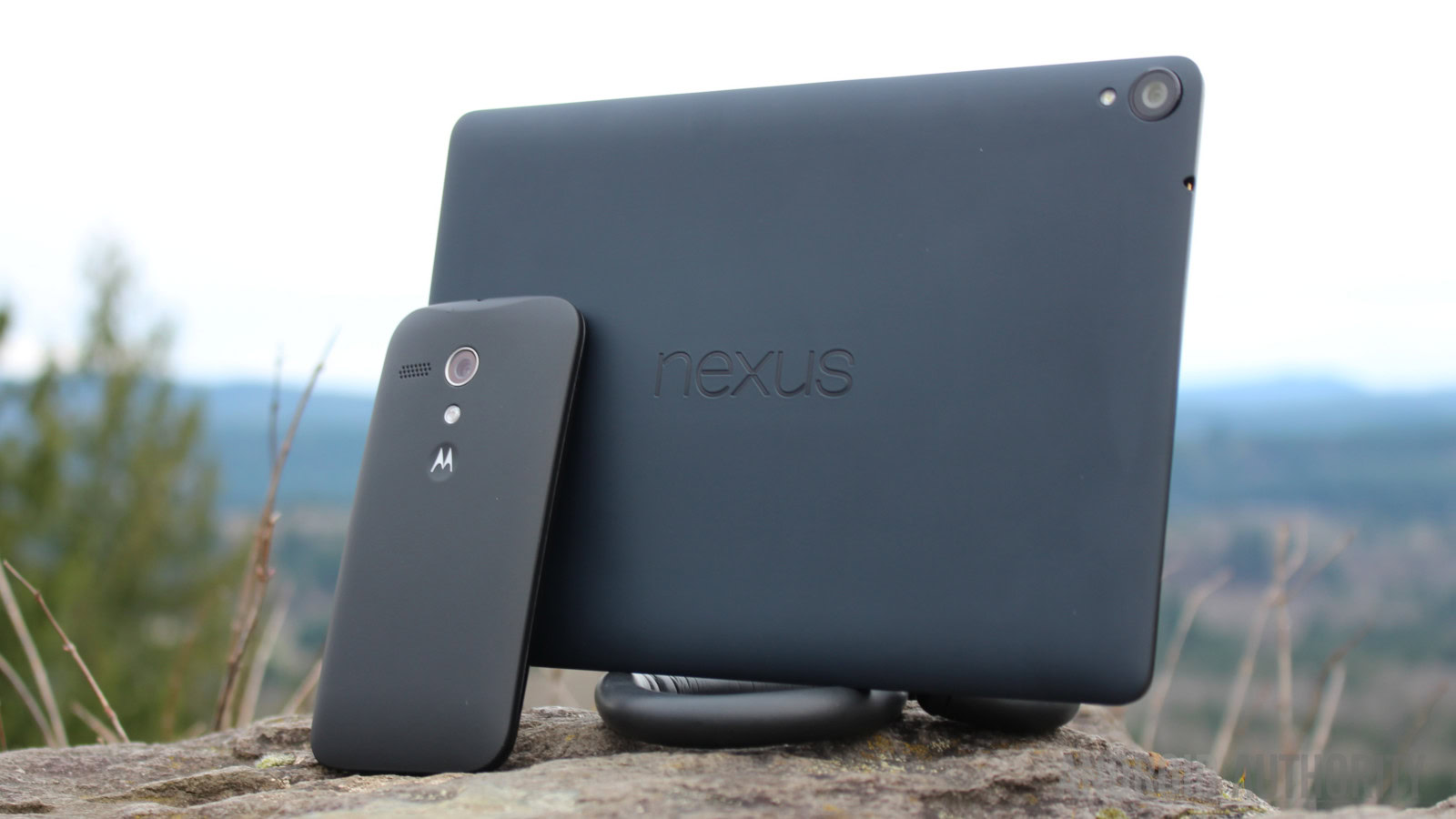
What’s eating my battery?
If you are still reading this, I suspect you have experienced, as I have, the battery on your Android device dropping rapidly for no apparent reason, or just dying faster than normal. Perhaps your device went unused all day, but died in a few short hours anyway. This is sadly a fairly common experience that can be caused by any number of things, including Android’s built-in services or the apps that you have installed.
There are many things you can do to identify the cause of rapid battery drain, from the built-in battery usage graph all the way up to advanced apps and debugging services and tools for developers. Today, we will keep it simple, looking at a few features built into stock Android.
Battery usage graph
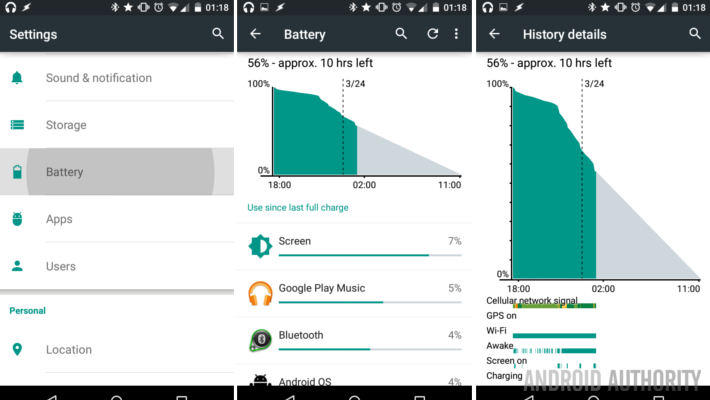
In addition to the simple battery level indicator in the top bar of your Android device, your OS keeps careful tabs on which apps are using up your battery. This info is presented in a fairly general format when you head into Settings -> Battery.
When it really boils down to it, the info is a tad confusing if you are researching a rogue application. My stats show that Google Play Music has kept my device awake for a little shy of two hours. But I’ve been listening to music for over 3 hours now. The remaining time lives within the listing for Mediaserver and I suspect into Android OS and Android System as well, but there is no way to tell from here.
Aside from the idiosyncrasies of the basic Battery usage chart, this is a great place to start, and may reveal your rogue application that is eating up your battery.
RAM usage in Apps
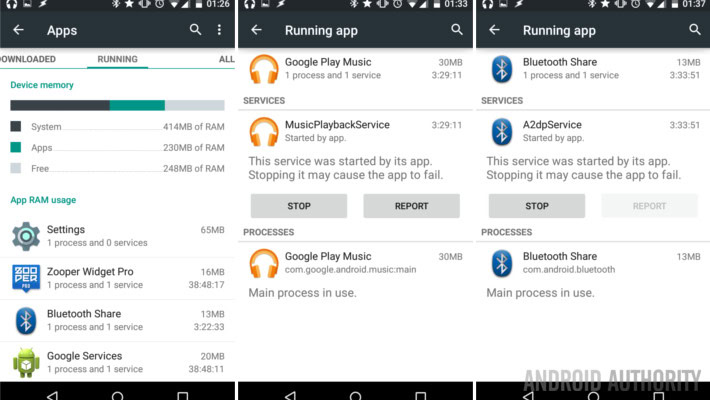
Aside from the actual battery usage list, you may be able to hunt down a problematic app in your running apps list. Head into Settings -> Apps, then swipe over to the Running tab.
What you see is a list of the apps that Android reports as currently loaded into RAM on your device, thus, the apps that are ‘running.’ Although this view does not offer actual battery usage, assumptions can be made with the visible RAM usage numbers, as well as the up-time counter.
What do we see above, oh yes, I now see that I have been streaming my music over Bluetooth for just shy of three and a half hours. That is more accurate for sure.
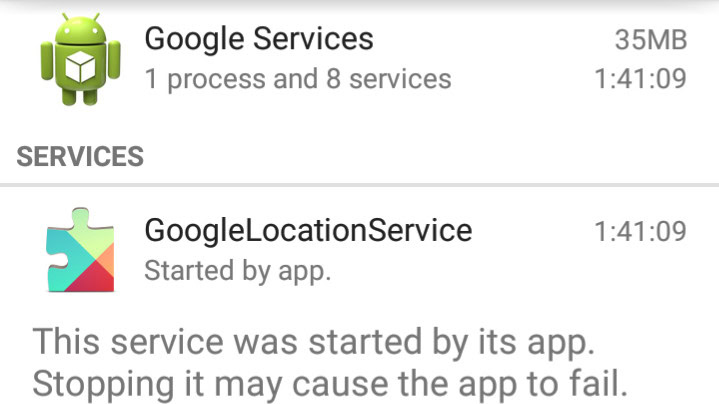
Have a look for a rogue app that is eating up too much RAM or has been running for far too long and you may find your battery killer. I wouldn’t outright recommend using the force stop button here, as this is akin to killing processes in your Windows Task Manager, kill the wrong one and the system will crash. Instead, check the app itself for a proper quit button, change settings to prevent background processes/syncing or swipe back to the left in the Apps Settings and stop or uninstall the app in your list of installed apps.
Let me share a small example of a service stoppage that might have saved me some battery. You see in my example that Bluetooth Share is running with just 1 service. My audio equipment, which is my only Bluetooth accessory running at this time, is equipped with only the A2DP protocol. By default, the Bluetooth service fires up all of the Bluetooth protocols, which I chose to stop as a test for today. To be honest, I wasn’t sure I would still get music, but it works and the phone hasn’t crashed. Trial and error wins again, and upwards of 9 unnecessary services are no longer potentially draining my battery.
Once again, this method is great for identifying rogue battery draining apps, you are better off using the in-app settings or un-installing the app as a means to fixing your battery life.
Developer Options – Process Stats
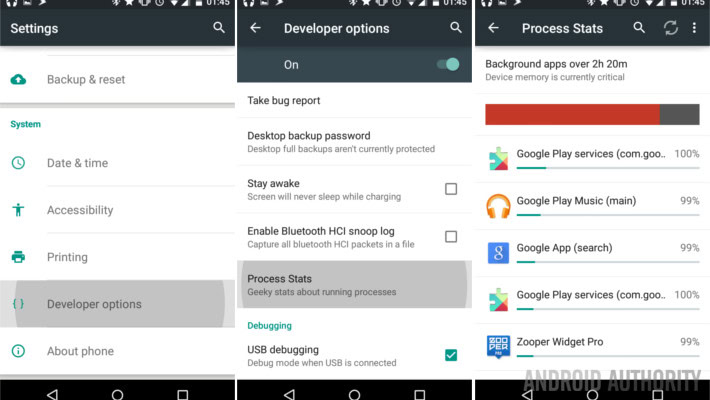
Taking things to the next level, there is a feature within Android’s Developer Options called Process Stats which, in its own words, provides “Geeky stats about running processes.”
This list of running apps is interesting to look at, and a little more detailed than the other tools, but perhaps less practical for the average user. What you see here is the exact breakdown of what the app is doing, or at least how it is using RAM.
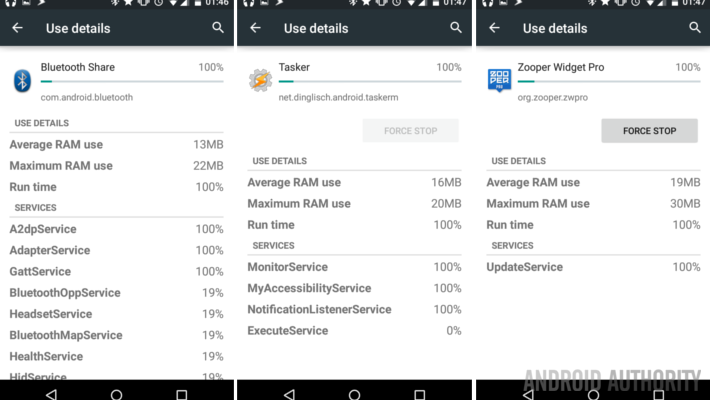
Look at that, seven of those services within the Bluetooth service were reduced when I manually stopped the services earlier. Did I really save any battery? Logically, I would think so, but that was not really my purpose today, I was just looking for apps that were acting up, eating too much juice, my Bluetooth is in good order.
Look through the list, be sure to hit the menu button and swap Duration and Stats Type to see all of your foreground/background/cached apps and services.
What’s next
As you can imagine, the steps we took today are not very advanced or effective for fine tuned battery saving management. There is also plenty more that can be done and surmised from the tools presented. We do hope that you find the reason for your battery drain concern using one of these methods, and that it is an obvious concern with an easy fix – like a rogue app that you will happily uninstall.
Before you jump into external measures, have a look through Developer Options for more tools that might help you. For example, you may turn on Show CPU usage and look through the list of running apps for something that shouldn’t be.
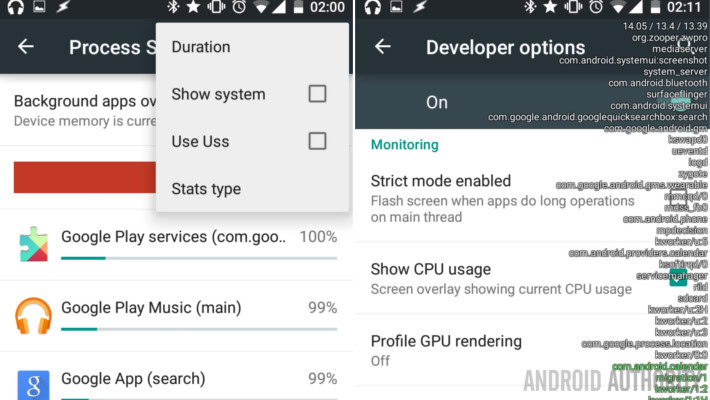
From there, as you branch out into other tools, keep in mind the word “wake-lock.” I’ll have more to say about this in the future, especially as we explore root tools and options. If you want to know more now, check out this Android Developers post for a good overview.
Next week
We hope that the relatively simple steps above helped you identify a rogue app that was eating up the battery on your Android device. Next week on our Android customization series, we will assume that your efforts today did not solve your battery drain concerns, let’s dive a little deeper into more non-root battery drain identification techniques.
What app did you find was eating the most battery on your device? Did you uninstall it?